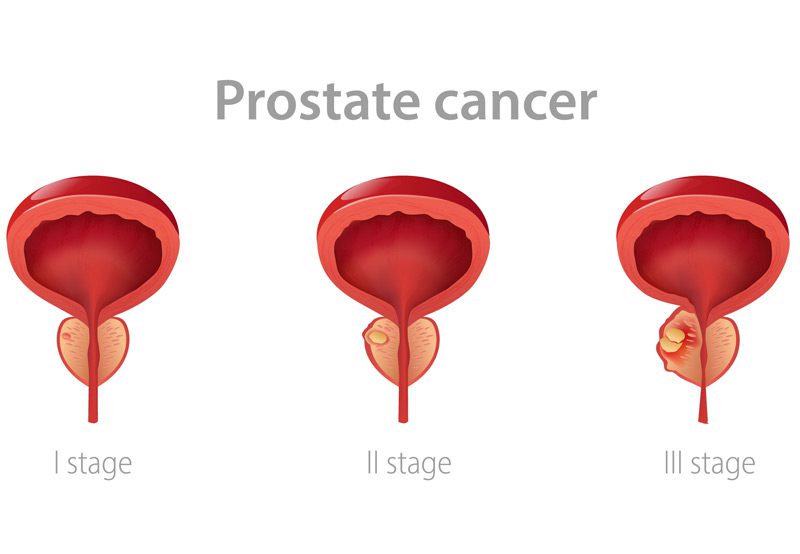

Prostate cancer is the most common cancer among men. It primarily affects men 65 and older. The condition is characterized by the growth of abnormal cells in the walnut-shaped prostate gland.
The prostate gland produces the fluid that allows sperm to travel to reproductive organs. If detected early and limited to the prostate gland, prostate cancer treatment is more likely to be effective.
Symptoms of Prostate Cancer
Many men with early stage prostate cancer don’t experience any symptoms. It’s common for some patients to have the disease for many months (or years) and not know it. When symptoms do arise, men may experience:
- Weak urine flows
- Painful erections
- Discomfort in the rectum
- Blood appearing in semen or urine
- Frequent urination, especially at night
- Stiffness or pain felt in the pelvis, lower back, or parts of the legs

Causes of Prostate Cancer
The medical community doesn’t yet know what causes the DNA mutations that form cancerous prostate gland cells. Some abnormal cells stay within the affected area, while others travel, or metastasize, to other parts of the body, usually in the later stages of cancer.
Risk Factors For Prostate Cancer
The following factors increase the risk of developing prostate cancer:
- Age
- Family history that includes prostate cancer, breast cancer, and obesity.
To increase the odds of early detection, men over 50 should undergo regular rectal exams and blood tests. Other ways to support prostate health include maintaining a healthy weight and consuming a nutritious diet.
Diagnosing Prostate Cancer
Screenings should be done on a regular basis to detect and diagnose prostate cancer, because most patients don’t experience symptoms in the early stages. Screening may involve a digital rectal exam (DRE) and a prostate-specific antigen (PSA) test. During a DRE, the physician will insert a gloved finger into the patient’s rectum to evaluate the prostate. If the urologist finds anything abnormal, that patient may need additional testing.
During a PSA test, a blood sample is taken from a vein in the patient’s arm and tested for a prostate-specific antigen, which is produced by the prostate. If the results show higher levels of PSA than normal, the patient may have an infected, enlarged, or inflamed prostate. Patients may need further evaluation that involves collection of a prostate tissue sample, an ultrasound, or an MRI fusion biopsy.
Non-Surgical and Surgical Treatment Options For Prostate Cancer
If a patient is diagnosed with prostate cancer, they may need to undergo additional testing to determine how fast the cancer is growing and whether or not it has spread. Patients with low-risk prostate cancer may only need periodic observation and testing (active surveillance). Radiation therapy to kill cancer cells in and around the prostate can be delivered internally through radioactive seeds placed in tissues, or externally with high-powered energy beams.
Other effective treatments for prostate cancer include immunotherapy, chemotherapy, hormone therapy, and cryosurgery, which is the freezing of tissue to kill cancer cells. Surgical treatment will involve robot-assisted removal of the prostate, referred to as a radical prostatectomy. The surgeon may also remove nearby tissues and lymph nodes.

